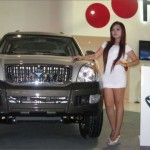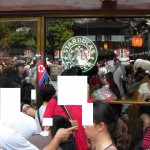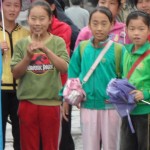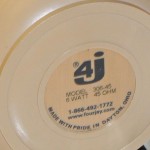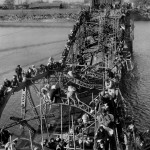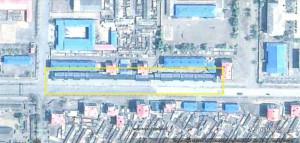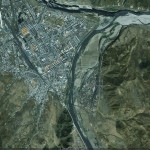According to Bloomberg:
The two sides of Chang Gwang Street (Satellite image here) in North Korea’s capital of Pyongyang show the gap between the Stalinist country’s elites and its capitalist-minded citizens. On one side, English-speaking officials mingle with Dutch traders at the Koryo Hotel. There, those with foreign currency can buy Heinekens for about a buck a can at the official exchange rate of 100 North Korean won to the U.S. dollar.
Across the street, a saleswoman at one of the private markets still allowed by the authorities giggles when a foreign guest says he doesn’t have the 200 won needed to buy a steamed vegetable bun. She flips the placard to reveal the cost in dollars, the currency of a country that doesn’t have diplomatic ties with North Korea. The price: 20 cents, implying an unofficial exchange rate of 1,000 won to the dollar.
Old Asia hands say this is one of the biggest spreads between the official and unofficial currency rate they have ever seen in the region. Back in the 1980s the gap between the official and market rates in China was not nearly as great as in North Korea today, says Ken Dewoskin, a director of Deloitte’s China Research and Insight Center in Beijing, who began his career watching China in the mid-1960s and first traveled there in 1977. “Even closed economies like Cambodia in the 1960s had only a 2-to-1 pricing discrepancy,” he says.
President Kim Jong Il moved late last year to revalue the won and limit the amount of cash that North Koreans could exchange for newly printed bills. The policy was designed to clip the wings of the private merchants who were increasingly creating an economy beyond the control of the authorities, according to the University of Vienna’s Rüdiger Frank, a political scientist who specializes in North Korea. The impact of the abrupt policy shift extended far beyond the merchants. “The revaluation not only wiped out people’s savings, but their trust in the government and their currency,” says Ha Tae Keung, founder of Open Radio for North Korea. “There’s a widespread belief among North Koreans that their money is going to get further devalued and they’ll get poorer just by holding onto it.”
The currency turmoil came amid mounting speculation that Kim Jong Il’s health was failing. Last month he promoted his son, Kim Jong Un, to four-star general, setting the stage for the country’s second hereditary power transfer. The government extended an unprecedented invitation to international media to witness the Oct. 10 anniversary celebrations marking the 65th anniversary of the Workers’ Party of Korea.
The next day, Pyongyang residents queued up as usual to spend their won at the Chang Gwang Street market. Twenty-four shoppers patiently lined up to buy a small cone of vanilla ice cream at 20 won each. A similar number waited for shaved ice with sweet bean paste at 5 won a bowl. Fifteen were there to buy sweet potatoes at 60 won per kilo. No one was seen lining up to purchase sausages, which at 1,700 won each were priced at the equivalent of 16 cans of Heineken beer at the Koryo Hotel.
While price tags at the hotel are in won, the national currency isn’t accepted there. That wasn’t a concern for guests and shoppers buying foreign goods—Scotch whisky and Syrian olive oil were on offer—with dollars, euros, and Chinese yuan.
One hotel worker, who said he made about 2,500 won a month, said the government provided people with food and other necessities such as clothing and housing. The free markets like the one across the street were there to supplement their diets, he said, adding: “We don’t operate like a capitalist country.”
Read the full story here:
In Pyongyang, the Dollar Commands Respect
Bloomberg
Michael Forsythe, Bomi Lim, Frances Yoon and Zeb Eckert
10/21/2010

